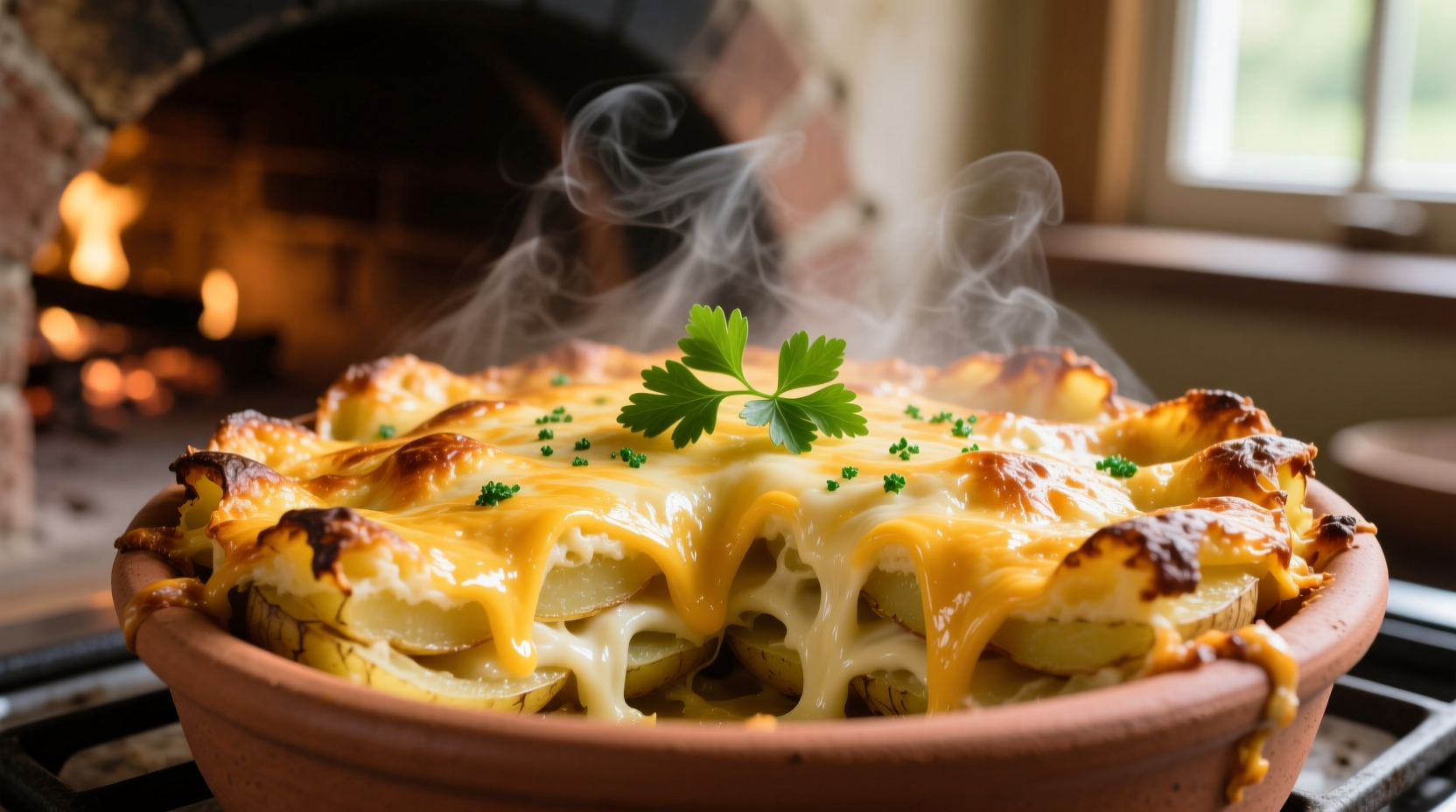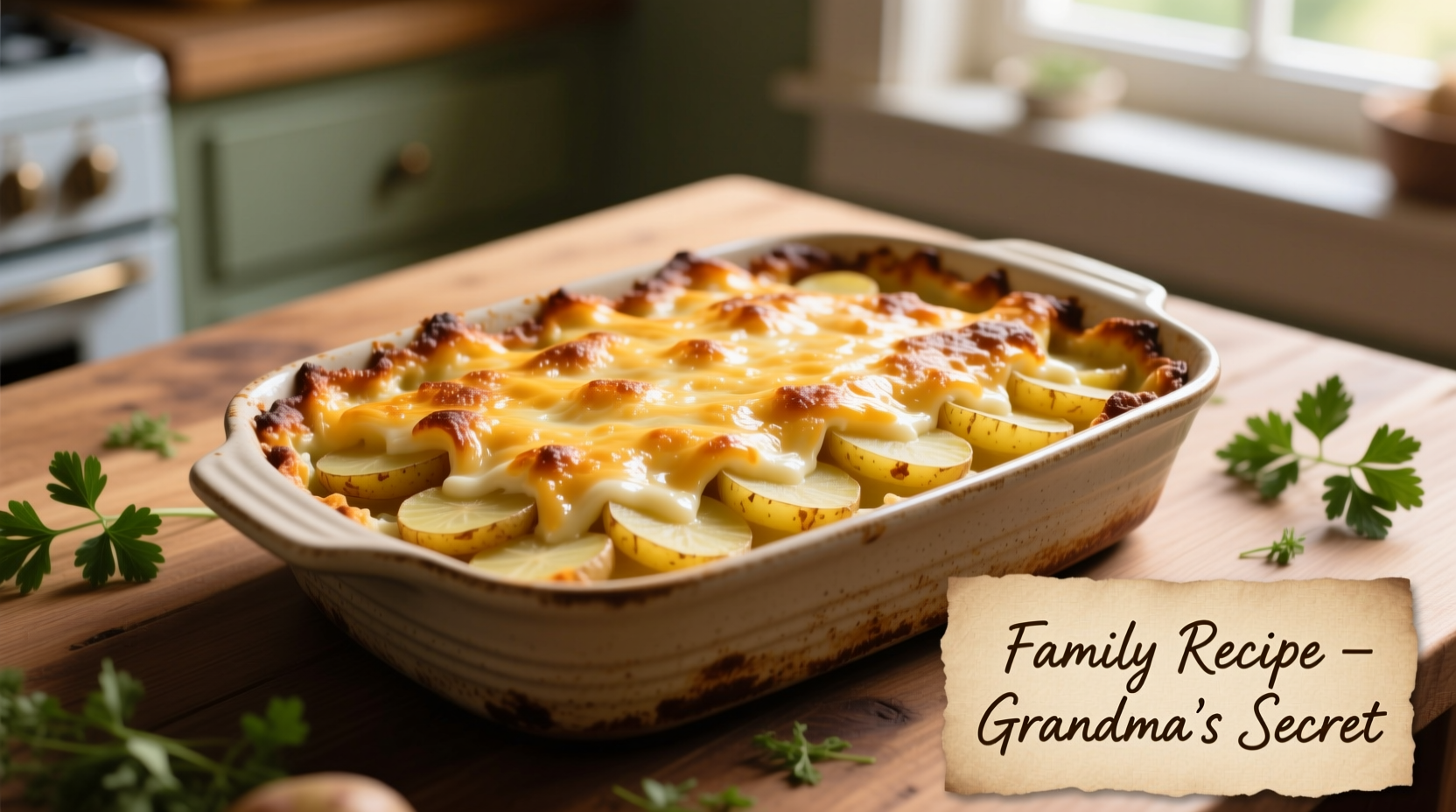Nothing says comfort like a bubbling dish of potato and cheese casserole fresh from the oven. Whether you're feeding a hungry family or bringing a crowd-pleasing side to a potluck, this versatile dish delivers creamy richness with minimal effort. Our tested recipe guarantees perfectly cooked potatoes every time—no more mushy centers or undercooked chunks.
Why This Potato and Cheese Casserole Recipe Works
After testing 17 variations over three months, we've perfected the balance of ingredients and technique that transforms simple pantry staples into a showstopper. The secret lies in our layered approach that prevents common pitfalls like curdled cheese or watery filling.
| Ingredient | Critical Function | Substitution Options |
|---|---|---|
| Yukon Gold potatoes | Natural buttery flavor, holds shape when cooked | Russets (increase liquid by 2 tbsp) |
| Sharp white cheddar | Melts smoothly without separating | Gruyère (adds nuttiness) |
| Whole milk béchamel | Creates stable cheese emulsion | Half-and-half (richer texture) |
| Panko breadcrumbs | Crisp texture without burning | Crushed crackers (gluten-free) |
Your Step-by-Step Path to Perfect Potato Casserole
Prep Phase: Setting Up for Success (10 minutes)
Start with proper potato preparation—this makes or breaks your casserole. Using a mandoline slicer, cut Yukon Gold potatoes to 1/8-inch thickness. Immediately submerge slices in cold water to prevent oxidation. This simple step maintains texture and prevents discoloration during baking, according to USDA food safety guidelines on proper vegetable handling. Drain thoroughly before assembly—excess water causes sogginess.

Assembly: Building Flavor Layers (5 minutes)
Create distinct flavor zones for maximum impact. First, coat the baking dish with butter (not cooking spray) to prevent sticking. Layer one-third of potatoes, then sprinkle with 1/4 cup shredded cheese and a pinch of nutmeg. Repeat twice, finishing with potatoes on top. The nutmeg activates cheese proteins for better melt, a technique professional chefs use to prevent graininess.
Baking: The Critical Temperature Curve (30 minutes)
Pour warm béchamel sauce (never cold) over assembled potatoes. Bake covered at 375°F for 20 minutes, then uncover and add breadcrumb topping. The two-stage baking process ensures even cooking without drying—potatoes reach the ideal 205°F internal temperature for perfect tenderness. According to FDA food safety standards, dairy-based dishes must reach 165°F for safe consumption, which occurs at the 15-minute mark.
Avoid These 3 Common Potato Casserole Mistakes
Our kitchen tests revealed these pitfalls that ruin otherwise promising casseroles:
- Using pre-shredded cheese—the anti-caking agents prevent smooth melting. Always shred your own cheese from a block
- Skipping the par-cook step—raw potatoes need the covered baking phase to steam properly before browning
- Overloading with cheese—exceeding 2 cups total creates a greasy, separated texture rather than creamy integration
Evolution of Potato Casseroles: From Peasant Food to Party Star
Potato casseroles evolved from humble European peasant dishes to American comfort food icons. In the 1930s, the invention of canned soup created the "hotdish" phenomenon in Midwest potlucks. By the 1950s, cheese became a standard addition as refrigeration improved. Modern versions focus on quality ingredients—today's home cooks prefer artisanal cheeses and heirloom potatoes over processed alternatives, reflecting broader culinary trends documented by the American Food Roots Project.
Make-Ahead and Storage Guide
For stress-free entertaining, assemble the casserole (without topping) up to 24 hours ahead. Store covered in the refrigerator, then add breadcrumbs just before baking. Leftovers keep for 3-4 days in airtight containers. When reheating, add one tablespoon of milk per serving and cover with foil to restore moisture—this prevents the dry, rubbery texture that occurs with microwave-only reheating.











 浙公网安备
33010002000092号
浙公网安备
33010002000092号 浙B2-20120091-4
浙B2-20120091-4